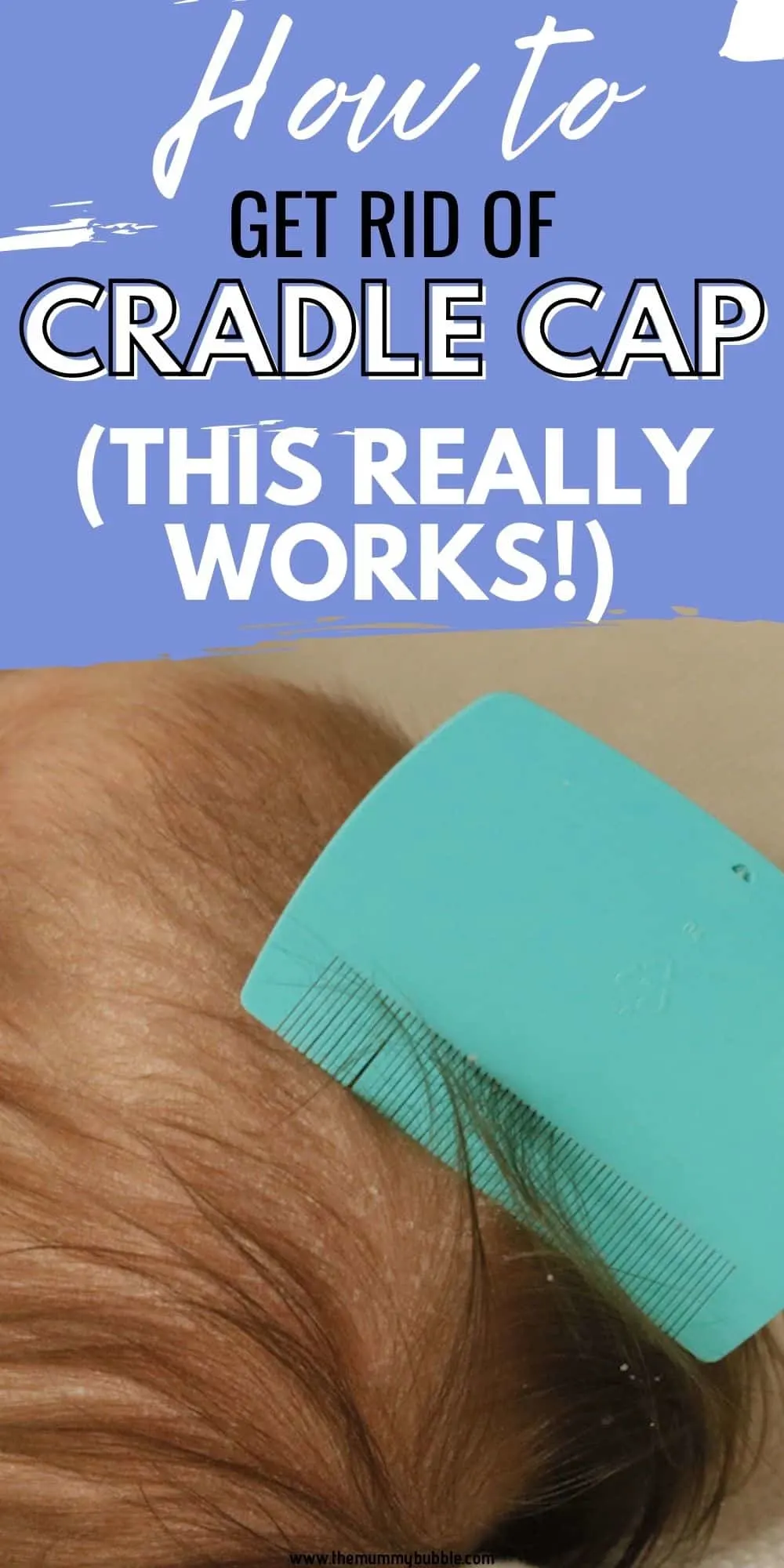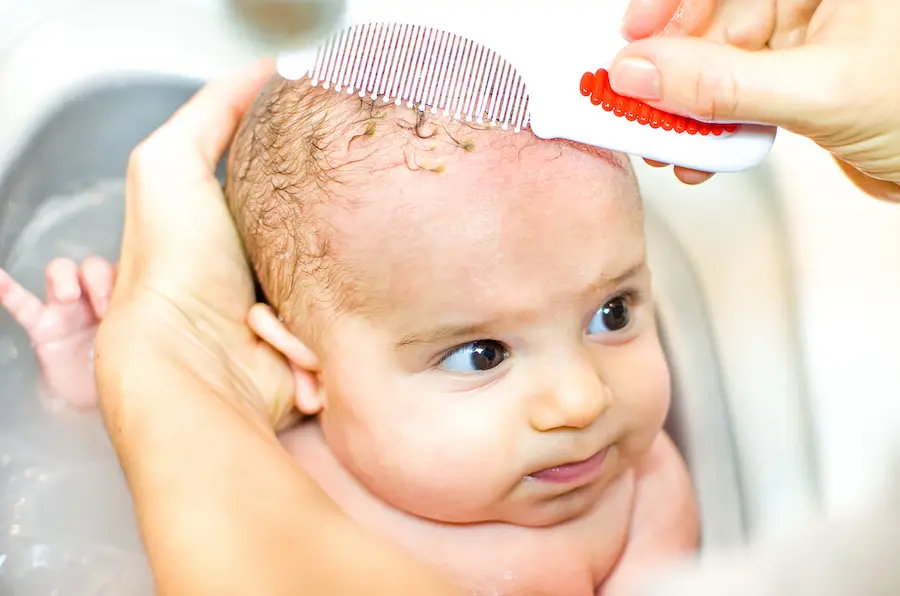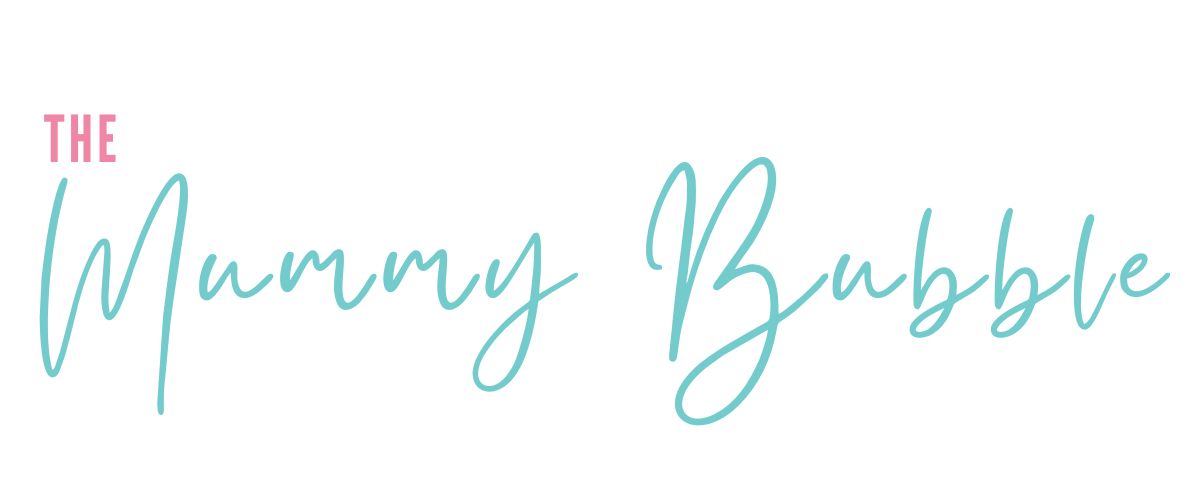
Cradle cap in babies is nothing to panic about, but it isn’t pleasant and as parents we just want it to go away.
Those big chunky yellow flakes that appear on your baby’s scalp can be pretty stubborn. But I’ve been through a ton of different cradle cap treatment options to get rid of my own baby’s cradle cap. Finally, I did find something that worked fast, so stick with me to find out what!
It drove me crazy trying to get rid of my baby daughter’s cradle cap. At its worst it covered her head with big, chunky yellow flakes. The cradle cap extended down her forehead to near her eyebrows.
It looked awful, although it rarely seemed to bother her apart from when she scratched it in the night.
The cradle cap set in when my baby was just a week old. It quickly escalated and it looked horrendous.

I was in absolute bits about it at some points. Just when I thought i was starting to get rid of the stuff, the next morning her head would be covered again.
This post contains affiliate links.
It never got infected, thank goodness, but it’s awful seeing something so grim-looking on your gorgeous little baby’s head.
Also my baby lost all of the beautiful hair she was born with on top of her head and it took a long time to grow back, but at 10 months it finally started to return.
If you’re here looking for tips on what to use to treat baby’s cradle cap I have got a lot of potential treatments for you.
I managed to get rid of my baby’s cradle cap after a lot of trial and error! Here’s a bit more information about how I finally got rid of my baby’s cradle cap once and for all.
I can report after a lot of experimentation with different items there was one product, which you can buy in the supermarket, that did the trick and cleared up the cradle cap fast.
Some of the treatments I’ve listed below are natural cradle cap treatments, as I know some people will prefer not to use chemicals on their baby’s skin. This is totally up to you of course, just research the options and decide what you feel comfortable with using.

What is cradle cap?
Cradle cap is the greasy, yellow scaly patches that sometimes appear on the scalps of young babies.
The thick plaques or crusts appear on the scalp, but sometimes on the ears, eyelids, eyebrows, nose, neck, groin, or armpits).
It appears as greasy or oily patches of skin, often covered with white or yellow.
The patches can sometimes turn red. Some of the flakes of skin will become loose and drop off in small or large chunks.
It is common, harmless and doesn’t usually itch or cause discomfort.
It can be tempting to attempt to just lift off the big flakes with your fingers, but please do not try this. You can end up taking away some of your baby’s scalp with it. Instead you need to loosen the flakes before you can brush them away.
What causes cradle cap?
No one knows. Many babies get it, but there are no answers as to what causes it. It generally always goes away by the time baby is six months old.
Cradle cap is not contagious and is not caused by poor hygiene or an allergy.
There is some speculation that cradle cap could be caused by hormones that pass from the mother to baby during the later stages of pregnancy. This is according to Mayo Clinic.
As the NHS says, cradle cap is not contagious! Your baby can still play with other babies when they have cradle cap.
How to treat cradle cap

There are lots of different cradle cap treatment options you can try, but first of all please remember NOT to use any of the following:
- Peanut oil
- Soap
- Adult shampoo
- Picking crusts off with your finger
You need to see your GP, according to the NHS, if the cradle cap is all over your baby’s body, the crusts leak fluid or bleed, the affected areas look swollen or there’s no improvement after several weeks.
Now, let’s get on to some treatment options! Just a reminder that before you apply anything to your baby’s scalp, do remember to wash your hands first.
Olive oil
Although many websites and forums still recommend this as a magical cure, in fact olive oil use can be bad for the condition according to some suggestions by health professionals. Some experts suggest the olive oil may interfere with your baby’s natural skin barrier, according to this article in Today’s Parent.
No studies have been done on this, and using olive oil certainly won’t do any harm according to this study. However apparently olive oil can actually help the cradle cap to thrive as it encourages yeast to grow, which is a cause of cradle cap.
I tried it before I discovered this, and it didn’t work anyway.
Have a chat with your health visitor to find out what the latest advice is, however I suggest trying one of the other options.
Apart from olive oil, you can use any vegetable oil such as sunflower oil.
Coconut oil
This is praised for its magical effects on eczema, which my baby also suffered with.
Although it is a lovely moisturiser, and I have used it as a treatment on my own scalp and hair, it didn’t shift the cradle cap.
Epaderm ointment
This stuff is seriously greasy, kind of like Vasaline. It made no difference but is lovely for bathing eczema babies.
I covered my baby’s scalp with it once a day. I would leave it on then gently wash it off.
Epaderm cream
This is a very rich cream that is brilliant at treating eczema, but didn’t help with the cradle cap.
A doctor suggested to me I could use the cream I had been treating her eczema with to treat her cradle cap. He said anything that moisturises the skin can help to lift the cradle cap.
Unfortunately this made no difference.
Diprobase lotion
This is a lighter moisturiser and it did help a little bit. However it didn’t make enough of an impact, it did help keep the scalp a bit less crusty after using it twice a day.
Oilatum shampoo
I found this actually seemed to make the cradle cap a little worse so I stopped using it immediately.
However if you look at reviews online many parents say they have found it’s really worked for them, so it’s worth a try.
Dentinox shampoo
This stuff worked absolute wonders within a week. I was so thrilled with the results. I saw an improvement within a couple of days.
You only need to use a tiny amount of the shampoo, which is specifically for treating cradle cap, and massage it into the entire scalp.
I was nervous about using a product on her sensitive scalp however she had no bad reaction to it, the smell was pleasant and it absolutely cleared the cradle cap up within days.
There was limited brushing required on my part, it seemed to just fall away leaving healthy skin underneath.
What to do about baby’s cradle cap
You need to be moisturising multiple times a day. Every time you change your baby’s nappy, put a little of what you’re using on your baby’s scalp. This may be oil or a simple baby moisturiser.
In terms of washing the scalp, I tried doing it every day with cotton wool but this made no difference until I used the Dentinox cradle cap shampoo.
Once I started with the shampoo, the flakes would lift off easily if I rubbed wet cotton wool over them or they just fell off on their own.
Bathing and care
I bought a cradle cap brush. It was cheap but to be honest it didn’t help a great deal.
It removed or loosened some of the flakes but not in any significant amount and the flakes were always back by the morning. You can also get cradle cap combs such as this one.

I would put the oil or whatever cream I was attempting to treat her with. Then I would leave it on for at least an hour, or sometimes overnight. Then I would rub it in circles all over the flakes.
Her flakes were so crusty and stubborn the brush was totally ineffective.
Just a reminder, do not pick at the scales as this can cause an infection.
Keeping baby comfortable
I’m not sure if my baby’s scalp was actually itching, but because the cradle cap became so irritated when she did rake her nails across it this caused a problem.
She would scratch her scalp so hard she drew blood. I tried to keep her nails as short as possible in order to prevent her scratching too hard.
In the end I had to use scratch mits and a hat to stop her from hurting herself.
Now, the hat never stayed on after a night of fidgeting and pulling at it with her hands. I also found many scratch mits dropped off way too easily. Shop around to find ones that will fit nice and snuggly, but not too tight, on your baby overnight.

Keeping the head moisturised will help with comfort too.
Although wearing a hat overnight can help stop the scratching, it’s a good idea to leave the skin open to the air whenever possible as it can help it heal.
Remember if you’re letting baby wear a hat overnight then do ensure they are a comfortable temperature before they go to sleep. Covering their head can cause them to overheat.
I hope these tips help. Please ask me any questions, I would love to help if I can.
V
X



